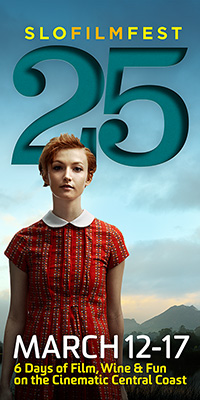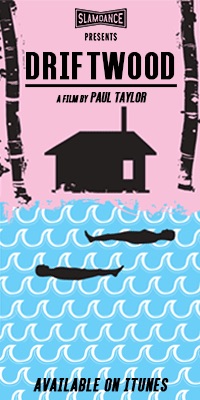Mira Lippold-Johnson’s BAD THINGS took the 2018 WTxFF Storyteller Award (for best writing). It was Lippold-Johnson’s second time at the Women Texas Film Festival, having screened in 2016 with her short film, THE LETTER E.
BAD THINGS follows a young black girl who deals with a bully in her class, who is bolstered by all the trappings of budding white male privilege. As we watch her try to deal with his crush/obsession with a cruel tinge, we also see her learning her place and situation via the strained relationship between her striving mother and her smart, but already jaded older sister. She sees, she processes, she learns, and makes a very dark decision on how to fix her problem.
Among Lippold-Johnson’s accomplishments with the film is the conciseness in her storytelling. We learn a lot through character reactions, loos, and gestures. We are shown as opposed to told, and most of all, as an audience, we are trusted to figure it out. It’s not going too far, to say the film is brave and mature in its approach to a trope that has been used for abject tragedy to darkly comic Grand Guignol. However, Lippold-Johnson succeeds in getting us to care about her central character as well as understand her pint-sized oppressor, and while we hopefully wouldn’t make the same choices to problem solve, in this case, maybe we don’t mind so much.

BAD THINGS
1 Before you submitted BAD THINGS to Justina Walford (WTxFF’s Artistic Director), you reached out to her uncertain that you should submit the film. This was despite the fact that you were an alum, having had a film screen at WTxFF’s first fest in 2016. Can you explain why you had that initial hesitation?
When I reached out to Justina, I wasn’t sure BAD THINGS was a film festival film. That was partially for the totally practical reason that it’s a really long short. At 22 minutes, it’s hard to fit into a shorts block. But it was also because the ending of the film makes people uncomfortable. (I won’t spoil it here, but I will say that at the end of the film, the eight-year-old protagonist does a bad thing.)
I usually think I have a pretty healthy relationship with doubt. I think doubt can be a great thing — nobody’s infallible and we’ve all got blind spots, so if doubt translates into checking yourself and listening to other people, that’s probably a good thing. When I was writing the script and casting the characters, I relied on my doubts to make sure I thought things through. But when the movie was finished and a couple of people told me that I shouldn’t have ended the story the way I did, that the ending was unacceptable and they didn’t like the movie because of it, I had the bad kind of doubt. If telling the story this way meant that no one would see it or that no one would relate to it even if they did, was it worth it?
That’s what I was wondering when I reached out to Justina for advice. Her positive response refocused me. Sure, a few people didn’t like the ending, but many more people have gone out of their way to tell me they recognized themselves in the story, that they related to and cared about the characters. And that’s why I wanted to make it in the first place.
2 You and DP Rachel Bardin are a pretty solid team by this point. Why do you think the two of you have gelled together so well and what is it about her “eye” and approach that you think is really special?
Rachel Bardin is an incredible cinematographer, and I’m super lucky to have gotten to work with her so much! We met when we were both getting our MFAs at the University of Texas in Austin. We were in a tight-knit 10-person cohort and started collaborating right away. When she DP’ed my film THE LETTER E, we were both still getting our sea legs (if that metaphor works) and we were able to build our skills and techniques together, so when we started on BAD THINGS we felt like old pros.
Our collaboration is based on having similar values and different eyes. She sees light differently than I do — she looks at the world and notices things I would never notice. That means that she’s capable of bringing the things I care about — beauty and reality — to the film in ways that I wouldn’t have thought of. Whether it’s carefully placed hard light hitting the floor to replicate that late-afternoon feeling or a floating Steadicam shot to create a subtle sense of magic, Rachel has strong convictions about how to accomplish the tone of each story beat, and I trust her instincts completely, which means I can focus on hitting the story beat with the actors.
Plus, I like to work with people who value other humans. I try to make working on my film sets a positive experience for everyone involved, and that means no angry yelling and lots of mentorship and teaching. Rachel’s the perfect fit for that kind of set. She runs her department with kindness and people respect her for it.

A villain in child’s clothing. (BAD THINGS)
3 BAD THINGS won the 2018 WTxFF Storyteller Award (Best Writing) and during the Q&A for the film you spoke about the economy of what was in the film versus what was left out of the film. Is it in your general nature to be “thrifty” with dialogue and screen time or is that something that is an evolving effort for you as a filmmaker?
I think I actually struggle with being too thrifty! My first drafts usually need to be fleshed out. I think that’s because I treat writing like problem solving — I like working out the logic of the story’s cause and effect, but I have a really hard time sitting down and letting myself write freely.
In part, I think that’s because my background is in video editing, so I’m constantly looking for what can get cut. But it’s also because I think the beauty of filmmaking is in how efficiently it can communicate story. It’s not just the words on the page — it’s the actor’s state of mind, the camera’s communication, the score, the production design, every cut. Everything works together to tell the viewer what we need to know, so we get a lot of information from very little. And I like the precision of communicating the minimum.
The thing I’m still working on is letting things breathe. There’s some intangible information that comes from letting human relationships and emotions play out. I’m trying to get myself to realize that it’s not always about the story beat; sometimes it’s about letting the characters be human.
4 You are going to begin teaching film very soon and recently you took a Facebook survey to ask people what films had influenced them as filmmakers. What were the most popular answers and what is on your personal list of influential films – and why?
This was so great! I posed the question, “what movies do you wish had been your introduction to film?” because I get to teach an introduction to film class this fall, and now I’ve got a list of over a hundred movies. I think the only ones that have been repeated so far are DO THE RIGHT THING, CLUELESS, Dorothy Arzner’s MERRILY WE GO TO HELL, and Buster Keaton’s THE GENERAL. So. I think my students are going to have a pretty great semester.
The movies I will watch over and over for forever (because I’m pretty sure they change every time) are HIS GIRL FRIDAY, ROMY AND MICHELLE’S HIGH SCHOOL REUNION, THE PIANO, BUTTER ON THE LATCH, and APPROPRIATE BEHAVIOR.

An unknowing mentor with her little sister. (BAD THINGS)
5 Having won an award for BAD THINGS, does that change your perception and/or expectation of how future audiences might perceive or “accept” the film, and will you attempt to get in a number of fests now, or not?
I think BAD THINGS is a movie that needs to find its audience. It’s been really surprising and wonderful to show it to people who love it. After my screening at WTxFF, I was in another theater waiting for another film to start when a group of women sitting in front of me turned around and told me they’d seen BAD THINGS earlier in the day and were still talking about it. They’d been discussing the ending and debating things about the characters — and they wanted to let me know how much they loved the film. After that, winning the Storyteller Award was bonus!
Winning this award doesn’t really make me think that everyone will like BAD THINGS — there will always be people who are uncomfortable with the ending or have issues with the film — but it’s a great reminder that I want to keep showing this film to people because there will be people for whom it matters. When Justina presented the award, she said something about how the film makes you root for an ending you shouldn’t want, which was such a great reminder that yes, discomfort is part of the ending, but that’s not necessarily a bad thing. Honestly, it’s something I’m proud of.
In the meta Broadway musical [Title of Show], there’s a line in a song that I think of all the time: “I’d rather be nine people’s favorite thing than a hundred people’s ninth favorite thing.”
We have a couple more festival screenings lined up — we’ll be at Sidewalk Film Festival and Austin Revolution Film Festival — and we’ll continue trying to get this film in front of people. Everyone who worked on this project is so crazy talented and I want everyone in the world to see their work.
(NOTE – BAD THINGS also won the Kathryn Tucker Windham Storytelling Award at the Sidewalk Film Festival.)
6 Popcorn or Candy?
Popcorn! And a milkshake!

Mira Lippold-Johnson (BAD THINGS) holds her 2018 WTxFF Storyteller Award (Photo by John Strange)








READER COMMENTS